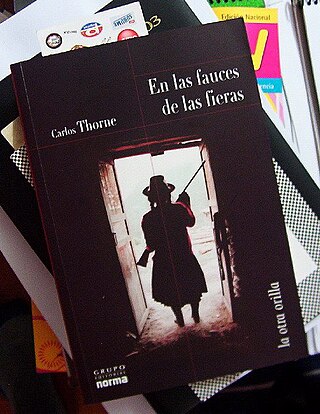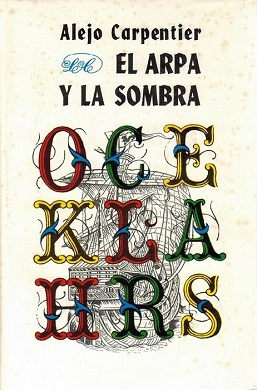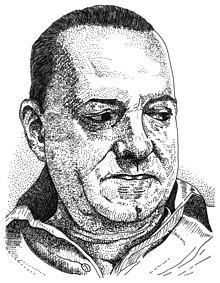Magic realism, magical realism, or marvelous realism is a style or genre of fiction and art that presents a realistic view of the world while incorporating magical elements, often blurring the lines between speculation and reality. Magical realism is the most commonly used of the three terms and refers to literature in particular. Magic realism often refers to literature in particular, with magical or supernatural phenomena presented in an otherwise real-world or mundane setting, commonly found in novels and dramatic performances. In his article "Magical Realism in Spanish American Literature", Luis Leal explains the difference between magic literature and magical realism, stating that, "Magical realism is not magic literature either. Its aim, unlike that of magic, is to express emotions, not to evoke them." Despite including certain magic elements, it is generally considered to be a different genre from fantasy because magical realism uses a substantial amount of realistic detail and employs magical elements to make a point about reality, while fantasy stories are often separated from reality. The two are also distinguished in that magic realism is closer to literary fiction than to fantasy, which is instead a type of genre fiction. Magical realism is often seen as an amalgamation of real and magical elements that produces a more inclusive writing form than either literary realism or fantasy.
The music of Cuba, including its instruments, performance, and dance, comprises a large set of unique traditions influenced mostly by west African and European music. Due to the syncretic nature of most of its genres, Cuban music is often considered one of the richest and most influential regional music in the world. For instance, the son cubano merges an adapted Spanish guitar (tres), melody, harmony, and lyrical traditions with Afro-Cuban percussion and rhythms. Almost nothing remains of the original native traditions, since the native population was exterminated in the 16th century.

Guillermo Cabrera Infante was a Cuban novelist, essayist, translator, screenwriter, and critic; in the 1950s he used the pseudonym G. Caín, and used Guillermo Cain for the screenplay of the cult classic film Vanishing Point (1971).

Ernesto Lecuona y Casado was a Cuban composer and pianist, many of whose works have become standards of the Latin, jazz and classical repertoires. His over 600 compositions include songs and zarzuelas as well as pieces for piano and symphonic orchestra.
The guaracha is a genre of music that originated in Cuba, of rapid tempo and comic or picaresque lyrics. The word has been used in this sense at least since the late 18th and early 19th century. Guarachas were played and sung in musical theatres and in working-class dance salons. They became an integral part of bufo comic theatre in the mid-19th century. During the later 19th and the early 20th century the guaracha was a favourite musical form in the brothels of Havana. The guaracha survives today in the repertoires of some trova musicians, conjuntos and Cuban-style big bands.
Contradanza is the Spanish and Spanish-American version of the contradanse, which was an internationally popular style of music and dance in the 18th century, derived from the English country dance and adopted at the court of France. Contradanza was brought to America and there took on folkloric forms that still exist in Bolivia, Mexico, Venezuela, Colombia, Peru, Panama and Ecuador.

Latin American literature consists of the oral and written literature of Latin America in several languages, particularly in Spanish, Portuguese, and the indigenous languages of Latin America. It rose to particular prominence globally during the second half of the 20th century, largely due to the international success of the style known as magical realism. As such, the region's literature is often associated solely with this style, with the 20th century literary movement known as Latin American Boom, and with its most famous exponent, Gabriel García Márquez. Latin American literature has a rich and complex tradition of literary production that dates back many centuries.
Cuban literature is the literature written in Cuba or outside the island by Cubans in Spanish language. It began to find its voice in the early 19th century. The major works published in Cuba during that time were of an abolitionist character. Notable writers of this genre include Gertrudis Gómez de Avellaneda and Cirilo Villaverde. Following the abolition of slavery in 1886, the focus of Cuban literature shifted. Dominant themes of independence and freedom were exemplified by José Martí, who led the modernista movement in Latin American literature. Writers such as the poet Nicolás Guillén focused on literature as social protest. Others, including Dulce María Loynaz, José Lezama Lima and Alejo Carpentier, dealt with more personal or universal issues. And a few more, such as Reinaldo Arenas and Guillermo Cabrera Infante, earned international recognition in the postrevolutionary era.
Esteban Salas y Castro was a Cuban composer of religious music. His compositions focused chiefly on vocal music, and are a fine representation of the late Baroque style. Although heavily influenced by French and Italian works of the period, his music is considered to incorporate an original Latin American component.

The Kingdom of This World is a novel by Cuban author Alejo Carpentier, published in 1949 in his native Spanish and first translated into English in 1957. A work of historical fiction, it tells the story of Haiti before, during, and after the Haitian Revolution led by Toussaint Louverture, as seen by its central character, Ti Noel, who serves as the novel's connecting thread. Carpentier's work has been influenced by his multi-cultural experience and his passion for the arts, as well as by authors such as Miguel de Cervantes. The novel stems from the author's desire to retrace the roots and history of the New World, and is embedded with what Carpentier calls "lo real maravilloso" or "the marvelous real"—a concept he introduced to the world of literature.

Carlos Thorne was a Peruvian novelist, writer and lawyer. He is regarded as one of the most original and innovative Peruvian writers of the second half of the 20th century. This is due to his unique blend of avant garde flashback techniques, following Malcolm Lowry and James Joyce, with historical detail and accuracy, to the point of reproducing the Spanish of the Conquistadores.

The dictator novel is a genre of Latin American literature that challenges the role of the dictator in Latin American society. The theme of caudillismo—the régime of a charismatic caudillo, a political strongman—is addressed by examining the relationships between power, dictatorship, and writing. Moreover, a dictator novel often is an allegory for the role of the writer in a Latin American society. Although mostly associated with the Latin American Boom of the 1960s and 1970s, the dictator-novel genre has its roots in the nineteenth-century non-fiction work Facundo (1845) by Domingo Faustino Sarmiento.

Miguel Rafael Martos Sánchez, often simply referred to as Raphael, is a Spanish singer and actor. Raphael is recognized as one of the most successful Spanish singers worldwide, having sold more than 70 million records in 7 languages. Currently, he is considered one of the most active singers of the so-called "divos of the romantic ballad", touring throughout America and Europe, transmitting for 60 years of artistic career, a repertoire full of novelty, for which his oldest songs are being recorded again, thus remastering with modern sounds closer to today's youth.
Cuban musical theatre has its own distinctive style and history. From the 18th century to modern times, popular theatrical performances included music and often dance as well. Many composers and musicians had their careers launched in the theatres, and many compositions got their first airing on the stage. In addition to staging some European operas and operettas, Cuban composers gradually developed ideas which better suited their creole audience. Characters on stages began to include elements from Cuban life, and the music began to reflect a fusion between African and European contributions.

Cuban culture encompasses a wide range of dance forms. The island's indigenous people performed rituals known as areíto, which included dancing, although little information is known about such ceremonies. After the colonization of Cuba by the Spanish Kingdom, European dance forms were introduced such as the French contredanse, which gave rise to the Cuban contradanza. Contradanza itself spawned a series of ballroom dances between the 19th and 20th centuries, including the danzón, mambo and cha-cha-cha. Rural dances of European origin, such as the zapateo and styles associated with punto guajiro also became established by the 19th century, and in the 20th century son became very popular. In addition, numerous dance traditions were brought by black slaves from West Africa and the Congo basin, giving rise to religious dances such as Santería, yuka and abakuá, as well as secular forms such as rumba. Many of these dance elements from European dance and religious dances were fused together to form the basis of la técnica cubana. Cuban music also contributed to the emergence of Latin dance styles in the United States, namely rhumba and salsa.
Álvaro Torres-Calderón Cisneros is a Peruvian poet and associate professor.
Desiderio Navarro Pérez was a Cuban critic and theorist of literature, art and culture. His work was aimed at the exercise of criticism on scientific bases. Art theory, aesthetics, culturology and literary sciences are widely present in his works. He translated texts from these disciplines into Spanish from twenty languages.
Sandra, la mujer de fuego is a Mexican-Cuban drama film directed by Juan Orol. It was released in 1954 and starring Rosa Carmina and Arturo Martínez.

Miguel Ángel Asturias Rosales was a Guatemalan poet-diplomat, novelist, playwright and journalist. Winning the Nobel Prize in Literature in 1967, his work helped bring attention to the importance of indigenous cultures, especially those of his native Guatemala.

The Harp and the Shadow is a novel by Cuban author Alejo Carpentier. The novel was first published in 1979. Consisting of three parts, The Harp, The Hand and The Shadow, the book describes many historic characters, including pope Pius IX, Christopher Columbus and pope Leo XIII.












